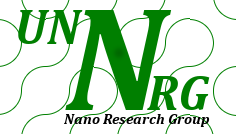JOURNAL OF NANO AND MATERIALS SCIENCE RESEARCH (JNMSR)
Call for Papers
Dear Professors/Researchers,
We are pleased to inform you that a platform as Journal of Nano and Material Science Research (JNMSR) has been established to explore your valuable research to the scientific world. The journal is free (now) for open access. JNMSR is a multidisciplinary peer-reviewed journal that reports principally the achievements of nanoscience and materials science all over the world covering areas of sciences, engineering, agriculture, medical and pharmaceutical sciences. The Journal of Nano and Materials Science Research publishes reviews, full-length papers, and short Communications recording original research results on, or techniques for studying the relationship between structure, properties, uses of materials and all aspects of nanoscale science. Its broad spectrum coverage areas encompass; materials synthesis, processing, nanofabrication, nanoprobes, spectroscopy, properties, biological systems, nanostructures, theory and computation, nanoelectronics, nano-optics, nano-mechanics, nanodevices, nanobiotechnology, nanomedicine, nanotoxicology, metals, ceramics, glasses, polymers, electrical materials, composite materials, fibers, nanostructured materials, nanocomposites, corrosion and biological and biomedical materials.
Submission of Article
Authors are encouraged to submit high quality original research work that has not been published or under consideration by other journals or conference proceedings elsewhere. Authors should submit manuscript electronically either as a PDF or Microsoft Word file to the Editor-in-Chief.
Authors’ Guides for Manuscript Format
Papers should be written in English, and submitted online. The manuscript should be typed with 1.5 spacing. Mathematical expressions and Greek or other symbols should be clearly identified. Equations should be written with the Equation Editor of the word processing software used in preparing the manuscript. E.g. Equation Editor of Microsoft Word.
Clear differentiation should be made between the different headings of sections, subsections. For instance, Section headings should be written like: 1. Introduction, while sub-section headings should be written like 1.1 Theoretical background, etc. The author's name, affiliations, phone number, E-mail address should be typed on the first page of the paper. A short abstract of not more than 300 words should be contained in each paper. Equations, tables, and figures should be numbered consecutively. Acknowledgements (including funding information/detail) should be gathered together in a separate section at the end of the text before the reference list. The International System of Units (SI) should be used throughout the manuscript. If other units are required in special cases, a conversion to SI must be provided in parentheses or in a table.
References
References should be cited at the appropriate point in the text by a number in square brackets.A list of references, in numerical order, should appear at the end of the paper. All references in this list should be indicated at some point in the text and vice versa. Unpublished data or private communications AND WEBSITE ADDRESSES should not appear in the list. Examples of layout of references are given below.
[1] C Hsieh, TH Hsu, FC Yang. Production of polysaccharides of Ganoderma lucidum (CCRC36021) byreusing thin stillage. Process Biochem 2005;40:909-916.
[2] GN Stephanopoulos, AA Aristidou, JE Nielsen. Metabolic engineering: principles andmethodologies. New York: Academic Press; 1998. p. 494.
[3] JJ Zhong, T Yoshida. Rheological chracteristics of suspended cultures of Perilla frutescens andtheir implications in bioreactor operation for anthocyanin production. In: DDY Ryu, S Furusaki editors.Advances in Plant Biotechnology. Amsterdam: Elsevier Science; 1994. p. 255-279.
[4] R Lima, RL Salcedo. An optimized strategy for equation-oriented global optimization. In: J Grievink, JV Schijndel. editors. 10th European Symposium on Computer Aided Chemical Engineering. NewYork: Academic Press; 2002. p. 913-918.
[5] CD Curtin. Towards molecular bioprocessing as a tool to enhance production of anthocyanins inVitis vinifera L. cell suspension culture. Australia: Flinders University; Ph.D. thesis; 2004. p.250.
[6] Snow-Brand-Milk-Prod. Lysozyme purification by affinity chromatorgraphy on crosslink chitosansulfate. Jpn. Patent. JP 05260-966. 92.03.24.
[7] SO Enfors, editor. Physiological stress responses in bioprocesses. Advances in BiochemicalEngineering/Biotechnology. vol. 89. Berlin: Springer; 2004. p. 244.
[8] T Schweder, M Hecker. Monitoring of stress response, In: SO Enfors, editor. Physiological stress responses in bioprocesses. Advances in Biochemical Engineering/Biotechnology vol. 89. Berlin:Springer; 2004. p. 47-71.
Citation in Text
Please ensure that every reference cited in the text is also present in the reference list (and vice-versa). Any references cited in the abstract must be given in full. Unpublished results and personal communications are not recommended in the reference list, but may be mentioned in the text. If these references are included in the reference list they should follow the standard reference style of the journal and should include a substitution of the publication date with either 'Unpublished results' or'Personal communication'. Citation of a reference as 'in press' implies that the item has been accepted for publication.
NOTE: Before you submit a manuscript please ensure you have read the Author's Guidelines and send the Manuscript in prescribed format.
Thank you in advance for kind support and looking forward for your manuscript.
